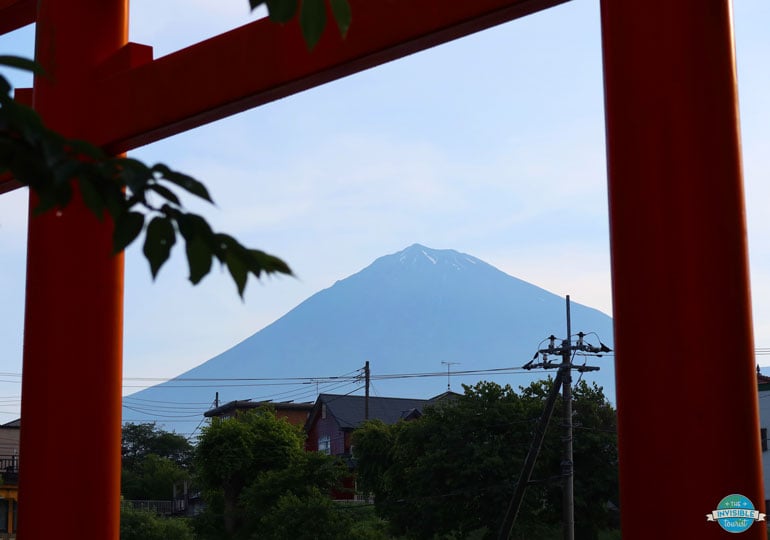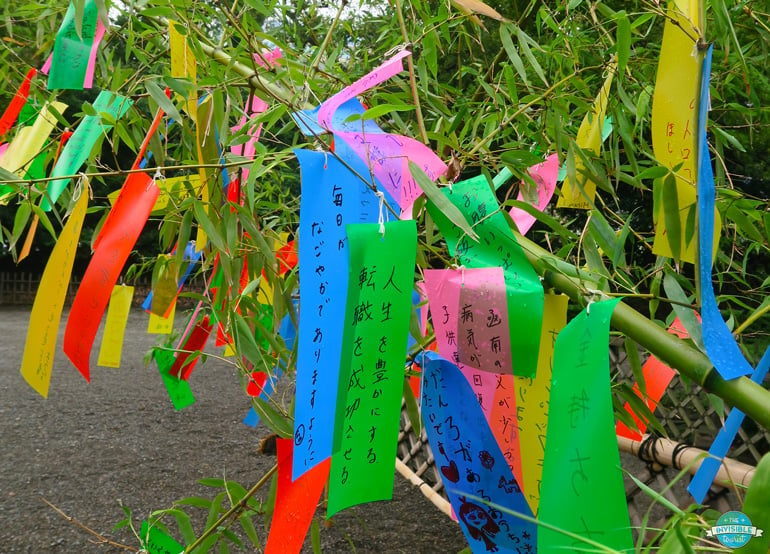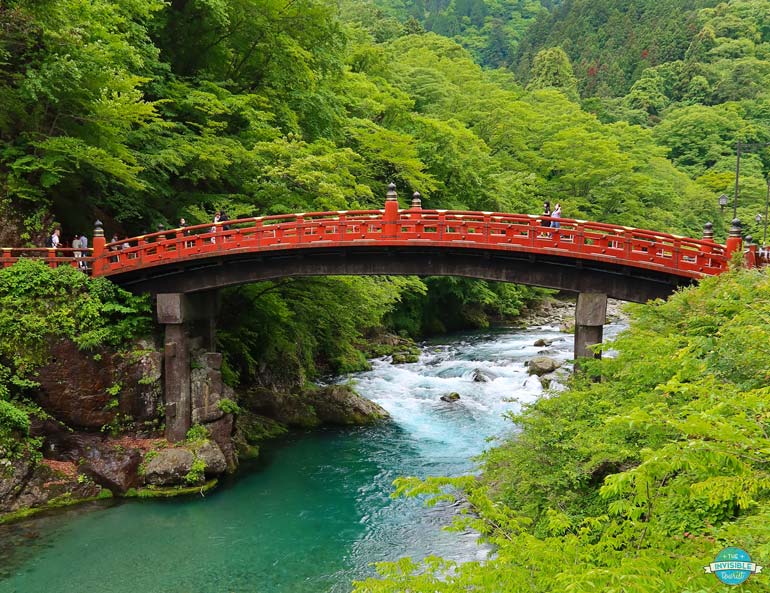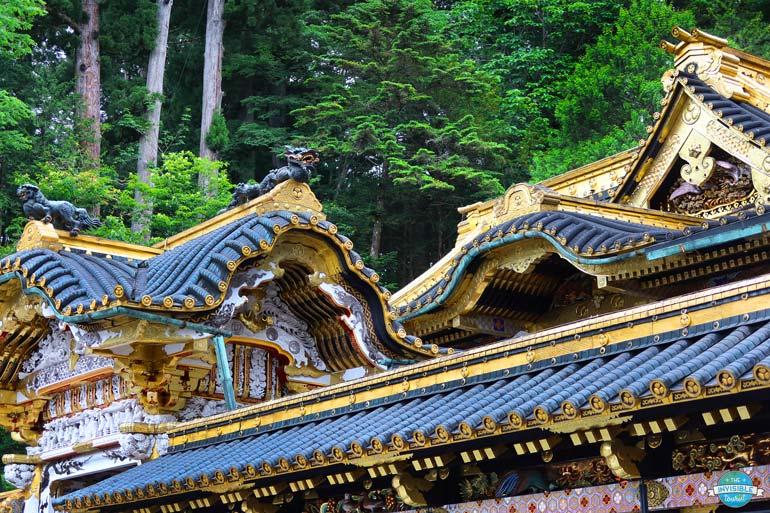19 Things No One Tells You About Visiting Japan in Summer
“Don’t listen to what they say; Go see.” ~ Proverb. Travellers to Japan can easily think of reasons to visit during 3 of the 4 seasons – fiery colours of foliage during autumn, white powder snow during winter, pink...

“Don’t listen to what they say; Go see.” ~ Proverb.
Travellers to Japan can easily think of reasons to visit during 3 of the 4 seasons – fiery colours of foliage during autumn, white powder snow during winter, pink hues of cherry blossom season during spring in Japan. The fourth season doesn’t receive as much love from foreigners, though. So why is that for Japan in summer?
If you ask almost anyone in a travel forum about visiting during summer in Japan, you’ll be bombarded with comments to the tune of “Don’t go, it’s much too hot!”, “Summer is the worst time to visit Japan!” and “The rain is terrible, change seasons!”
I empathise that not everyone has the luxury of being able to choose the season in which they can travel abroad, for example teachers who can only venture away during school breaks. So when is the best time to visit Japan? The answer is very subjective and will vary from person to person.
For those of you like me who aren’t too bothered by warm summer climates and Japan is in your sights, never fear. I’m about to share ALL the things no one tells you and exactly what you can expect.
I’m a firm believer that a summer in Japan trip should not be overlooked. In fact, I’ve been 3 times during this season and ADORE it! Despite the general consensus, I can assure there are plenty of benefits to visiting Japan in the summer. Read on for more!
This guide to summer in Japan will cover:
When is summer in Japan? Summer in Japan temperatures 19 Things no one tells you about visiting Japan in summer Quick links to useful resourcesThis post contains affiliate links, at no extra cost to you. I may earn a small commission if you click through and make a purchase.
 Pin me to Pinterest for reference later! 📌
Pin me to Pinterest for reference later! 📌When is summer in Japan?
Like other countries in the Northern Hemisphere, Japan summer months are June, July and August.
Summer in Japan temperatures
As I’ve mentioned above, I’ve now visited Japan during June, July and August/September so I can speak for each month.
Japan in June
June is the most pleasant temperature wise. It’s still early summer, and this brings in a not-so-welcome annual visitor, tsuyu 梅雨. This simply translates to “rainy season.” You still may need a light cardigan during the early mornings and evenings.
Weather in Japan in July/August
Yes, July and August are summer’s peak months and can get quite hot. But remember, hot is relative depending on where you usually live! As an Australian, the heat and humidity for me doesn’t feel too different from home.
However if you live in a much colder climate in Europe or North America, Japan during summer may very well not be for your idea of fun. But don’t worry – there are numerous ways to beat the heat I reveal further down the page.
I’ve created this little table to give you an idea of average temperatures per month, starting in the south in Fukuoka and working northwards to Hokkaido.
| City | June Max/Min Temp Average (°C) | July Max/Min Temp Average (°C) | August Max/Min Temp Average (°C) | Rainy Days |
| Fukuoka | 27 / 20 | 31 / 24 | 21 / 24 | 11 – 12 |
| Kyoto | 28 / 19 | 32 / 23 | 33 / 24 | 8 – 11 |
| Tokyo | 26 / 19 | 30 / 23 | 31 / 24 | 8 – 11 |
| Hokkaido | 21 / 13 | 21 / 18 | 22 / 18 | 8 – 9 |
Source: weather-and-climate.com
19 Things No One Tells You About Visiting Japan in Summer
Alright, what is Japan like in summer? Let’s take a look at all the things I wish I knew before my first visit to Japan during the warmer months!
Summer in Japan is absolutely stunning
While the spring months seem to mostly capture the attention of foreign visitors, let’s not forget how absolutely stunning Japan is in summertime! Flowers are just about everywhere you look, and all the trees are full with lush green leaves.
Hydrangeas are some of the most popular summer flowers, planted all over and turning otherwise dreary footpaths into kaleidoscopes of colour. They’re also popular flowers of temples and shrines.
Irises also make a star appearance during the start of the rainy season. Native to Japan, their blooming at this time was a signal for farmers to commence rice planting.
You can only climb Mount Fuji’s summit during summer
According to the official website for climbing Mount Fuji, the season is from early July to early September. In other periods and during the snow season, climbing Mt. Fuji is prohibited.
TIP: Although for experienced hikers, it may be possible earlier with a guided group, however they rely on roads to the 5th Station to be operational.
TIP: Traditionally when pilgrims would climb to the sacred mountain summit, to pack light they were known to carry cucumbers and miso paste. Two random sounding items, however cucumber is mostly water and gave them something to eat, while the miso paste is packed with protein and nutrients needed to sustain the climb.

The cultural significance of summer festivals
Having the chance to experience a summer festival in Japan is a unique opportunity! Each matsuri (festival) is dedicated to a particular shrine and its deities in the native Shinto religion, and is celebrated with its own traditions and events.
These festivals involve people dressing in traditional clothing, live music and street processions of mikoshi (portable shrines where the deities are enshrined). Local businesses get involved by setting up stalls of street foods.
With their origins dating back centuries (if not millennia), matsuri are very special and culturally significant in Japan. So much so, several matsuri have earned the title of “World Intangible Cultural Heritage” by UNESCO.
Some of the most popular summer matsuri in Japan:
Gion Matsuri, Kyoto – 9th century, Yasaka Shrine Sanno Matsuri, Tokyo – 17th century, Hie Shrine Sanja Matsuri, Tokyo – 17th century, Asakusa Shrine Tenjin Matsuri, Osaka – 10th century, Tenmangu Shrine Aomori Nebuta Festival, Aomori – Origin unknown, but is related to the Tanabata Festival (more down the page). Potentially could date back to the 8th century.Fireworks displays
Fireworks were once used to scare away evil spirits, and today there are a number of summer hanabi (fireworks displays) to enjoy around Japan so I’ve listed a few below. Check if one will coincide with your trip!
Sumida River Fireworks Festival Edogawa Fireworks Festival Kamakura Fireworks Festival Biwako Fireworks FestivalThe meaning behind colourful papers hanging from bamboo stems
If you happen to visit Japan in July, you may see colourful papers tied to bamboo fluttering in the breeze. People leave wishes on them, like wishing on a star, for the Tanabata Festival (meaning “Evening of the Seventh” or Star Festival).
You’ll find specially-made bamboo decorations outside of storefronts and shrines, and you’re welcome to leave your own wish.
In Japanese folklore, the festival celebrates the meeting of two deity lovers (represented by stars) who are separated by the Milky Way. They’re able to meet once a year on the 7th day of the 7th month, hence the festival takes place on the 7th July annually.
This ancient festival originated in China and has been in existence in Japan since 755 AD.

The rain really isn’t so bad…!
During my summer 2022 visit to Japan, I decided to take a spontaneous day trip from Tokyo to Kawagoe, one of my favourite little Edo-era cities. I’d visited in early spring previously so wanted to explore again during summer.
While I had planned to leisurely walk 30 minutes to Hikawa Shrine from Kawagoe station, the swirling dark clouds and claps of thunder had me second-guessing my life choices. The rain poured down hard and I sought refuge in a gyoza shop. Was this day trip about be ruined?!
Nope, after the downpour which lasted around 20 minutes, the sun came out, clouds cleared completely, and the hot sun returned – like it had never happened. The only trace of the event were puddles on the ground.
While this is just one example, my point is the rain comes and goes, kind of like any tropical destination. Any downpour seems to be quite short-lived in my experiences during summer in Japan, and sometimes I find it a welcome respite from the heat.

Bring along insect repellent during Japan summer
Small midges can be very annoying when exploring the forests in Japan during summer. I wish I had worn it for the walk to Jigokudani Snow Monkey Park in the summer, as well as at the UNESCO Shrines of Nikko.
You may wish to wear insect repellent to keep pesky bugs at bay and to avoid itchy-bite mementos.
Always carry an umbrella (or two)
You may have umbrellas at home already, but if not they make the perfect souvenirs from Japan! The Waterfront brand is my favourite as they are sturdy as heck, come in pretty designs and have lasted me for years.
You can pick up umbrellas from convenience stores for around 500 – 800 yen (depending on the size) and from souvenir shops. The clear umbrellas are a konbini (convenience store) icon!
Here’s why you should have two with you during your trip, but if you prefer you won’t ever have trouble finding one when you need it most.
A small fold-out one that can easily fit in your bag for those days when it looks like it’s not going to rain. Trust me, the only thing that’s certain is it can (and will) rain at any time, regardless of the forecast. Small umbrellas are great for that light drizzle. A larger umbrella with a handle to save you during downpours. Believe me when I say the fold-out ones will not cut it haha.
Umbrellas have a dual purpose, too
It’s obvious you can use an umbrella to shield yourself from rain, but many Japanese people also use them when the sun comes out, too!
The glaring rays will cause sunburn if your skin is exposed too long (even on overcast days – my nose learnt this the hard way), so it’s a good idea to pop it up for your own little patch of portable shade.
Don’t be surprised if your paper shopping bag receives a raincoat
Japan is a country all about convenience and omotenashi – exceptional customer service (I’ve written more about [beautiful Japanese words and their meanings here]).
This means in order for your purchases not to get wet whilst you’re walking in the rain, shopping bags are presented with plastic rain covers. I’m a little torn on this idea; it is very effective however it adds to plastic waste.
TIP: If you would rather not have one, simply say “kekko des” けっこうです to the cashier. Find out what this means in my guide to learning Japanese for tourists (and download your free cheat sheet!)
Summer is the best time for forest areas, shrines and dense parks
Hoping to escape the heat but remain outdoors? This is easy in Japan, just head to the forests, gardens, shrines and lush parks for some relief. You don’t even need to venture far.
Tokyo’s and Kyoto’s outskirts are laden with dense trees and shrubs, the temperature feeling a few degrees cooler than central parts of the cities.
Green places to cool off in Japan
My personal favourites as well as others I’m aware of are:
Meiji-jingu, Tokyo Jigokudani Snow Monkey Park walk, Nagano Arashiyama, Kyoto Observation Hill, Yokohama UNESCO Shrines of Nikko, Nikko Mount Takao, Tokyo Todoraki Valley, Tokyo

Snow monkeys have their newborns on show in summer
Did you know that the famous snow monkeys can actually be visited year-round? I loved seeing them during summer!
While it was too warm for them to be bathing in the onsen (hot springs), the summer weather meant they were running around everywhere instead of being confined to one spot. Plus, their newborn babies were absolutely adorable – and very cheeky!
TIP: Read my full guide to visiting Jigokudani Snow Monkey Park in summer here.
What to wear in Japan in summer
To beat the heat when packing for Japan in summer , I’d recommend wearing natural fabrics such as cotton, linen, and flowy clothing for women. Polo shirts and smart-casual shorts are fine for men.
Leather sandals are my go-to choice of footwear, because if they get wet they easily dry out. I’d hate to have to deal with wet socks and soggy sneakers after a bout of rain!
If you’re up for it, you can also dress up like locals in lightweight summer yukata or kimono – and yes, it’s perfectly acceptable and encouraged.
Ladies, remember Japan is quite a conservative country, so you won’t see local women bearing their cleavage and their shoulders are usually covered. Please follow their lead and do the same to “blend in.”
TIP: I’ve detailed more tips in my guide to what to pack for Japan for all seasons (and some exclusive tips especially for pregnant women).
What NOT to bring? A raincoat – it’s pointless. You’ll get all hot and sweaty and it will be a nuisance to carry around. The rain is nice and cooling on humid days!

Use a furoshiki cloth to wipe away sweat
Japanese locals carry around furoshiki cloths – these are like handkerchiefs but feature beautiful patterns rather than boring ones we may have seen at home.
I’ve seen some with beautiful Japanese-style designs in souvenir stores, however you can pick them up for cheap at convenience stores and specialty stores such as Daiso.
Furoshiki can be used to wipe away a sweaty forehead, and as a bonus are useful to dry your hands in the public bathrooms as paper towel or hand dryers are quite rare.
Maximise your chances of seeing Mt Fuji during summer
Did you know the summer months provide the least chance to see Japan’s sacred mountain? I was naive during my first trip and thought seeing her would be a given! The humidity creates a lot of cloud cover, meaning her iconic peak is covered most of the time.
Even though your best shot of seeing Mt Fuji on a clear day is during the winter months, it is possible to maximise your chances for views like these!


Tips for seeing Mt Fuji in summer
Stay at least 2 nights in a city surrounding the base of Mt Fuji or the Fuji Five Lakes region. A day trip from Tokyo takes around 2 hours, so even with an early departure at say 7:00 – 8:00am, it’s highly likely clouds will have rolled in by the time you arrive. Wake up early the next morning at first light (I’m talking 4:00 – 5:00am) and the clouds may have completely cleared overnight, as they did for me. In my experience, clouds almost completely covered My Fuji by 9:00am when I returned from my morning exploration. So if this is something you’d like to do, the early bird really does catch the worm!Cool off at beaches and waterparks in summer season
While I’m personally yet to experience a Japanese water park, here are some ideas if this kind of thing interest you:
Yomiuri Land, Tokyo Summer Land, Tokyo Fuji-Q Highland, Fujiyoshida Kawagoe Aquatic Park, Kawagoe Nagaike Water Park, Yamanakako Hakkeijima Sea Paradise, YokohamaHow to stay cool in Japan in summer? Look and listen for the wind chimes
Say what now… How can a wind chime make you feel cooler?
You may notice beautiful furin 風鈴 (glass windchimes, literally “wind bell”) whilst exploring Japan during summer. It’s thought that their sound is a reminder of the invisible breeze, in turn helping you feel cooler!
Their gentle chime sounds create a calming vibe that is so lovely.
TIP: In Japan, it’s believed messages can be carried on the wind to love ones who have passed.

Get stuck into cool foods, drinks and desserts
Japan is a master when it comes to creating exciting foods, snacks and beverages to celebrate whatever the current season may be.
In summer, look for cool soba noodles, lemon sour drinks, cold matcha tea, melon-flavoured drinks and desserts, and a traditional favourite, kakigōri かき氷. These shaved ice desserts are very popular in Japan, flavoured with sweet syrups and condensed milk.
My personal favourites that come in squeezy-pouch form are Coolish (soft-serve ice cream) and energy jellies. These are actually pickled aloe vera chunks in fruity flavours such as pineapple, peach, apple and grape. A word of warning – they are very addictive (and your stomach is beautiful)!
Cheaper hotel deals, fewer tourists during Japanese summer
Another benefit of heading to Japan in summer is because potential tourists usually try and avoid this time, it means decent hotel deals and fewer crowds – what’s not to love about that?!
Take advantage of the electric and old-fashioned air conditioning
In a major city and feeling too hot? Head indoors to a konbini, shopping mall or department store to absorb that icy air conditioning.
I’ve also seen plenty of locals reach for miniature hand-held electric fans, or sensu センス (folding fans), to help cool down in the streets or in the subway. The gorgeous designs on folding fans make them beautiful souvenirs!
Summer can mean typhoon season
This is the only downside I can honestly think of!
Typhoon season in Japan lasts from July to September, with the peak time being August-September. These north-Pacific Ocean weather systems (known as hurricanes over the Atlantic Ocean) can bring torrential rains and strong winds of up to 200km/h.
Bad typhoons can cause delays and cancellations with airlines and transport, however thankfully during all my time in Japan during the summer months, I’ve not experienced a typhoon. You can read more about them here.
Quick links to useful resources
You may find these resources handy for planning a trip to Japan, and don’t forget to check my full Japan travel blog for itineraries and travel tips:
Wondering where to stay in Tokyo? Compare Tokyo hotel prices here. Learn 30 crucial do’s and don’ts in Japan to help you better understand Japanese etiquette before your trip. Be linguistically prepared by practising some useful Japanese phrases for tourists (with my free PDF cheat sheet, too!) Find out some fun day trips from Tokyo you haven’t thought of. Planning a longer trip? Take a look at my popular Japan itinerary for 2 weeks (or my off-the-beaten-path itinerary for 3 weeks in Japan). Discover the best Japan travel guide books for all types of travellers (including my very own #1 Amazon New Release book!) A Tokyo Subway Pass is perfect to use on the Tokyo Metro as soon as you arrive, as is a Suica card to use on JR trains (if you don’t have the Japan Rail Pass) and most other public transport throughout Japan. Pre-book your pocket wifi hire and pick it up from the airport when you arrive in Japan. Alternatively, a SIM card for your existing phone also makes navigating the Tokyo trains super easy and convenient, too! Tickets for teamLab Borderless, Robot Restaurant, Tokyo Disneyland & DisneySea, Hakone Free Pass, Universal Studios Osaka, Studio Ghibli Museum and many more passes can be purchased in advance online. This will save you loads of hassle and wasted time lining up when you’re there!Concluding all the things no one mentions about a Japan summer visit
That’s a wrap for all the things I wish I knew before visiting Japan in summer! Are Japanese summers hot? Sure, but if you can look past a few nuances there are advantages to visiting during this time.
From ways to stay cool, seasonal foods and beverages to try and what to pack, to average temperatures, festivals and what to know about tsuyu, you’re well on your way for being prepared for your summer Japan trip.
Have these pointers changed your mind about visiting Japan during the summer months? Do you still think it would be as dreadful as most people claim it is? Let me know in the comments below.
If you found this helpful, please share, save it for later and come and join me on Facebook, Pinterest, TikTok or Instagram for more!
Until next time,

Do you love Japanese sweets, snacks and candies?
Read my Tokyo Treat review and get popular Japanese snacks delivered here, or read my Sakuraco review and get traditional Japanese sweets delivered here!
Like it? Pin it! 📌

This guide to Japan summer contains some affiliate links, at no extra cost to you. I may earn a small commission if you decide to make a purchase and if you do, thanks for your support! This helps with the costs of running my blog so I can keep my content free for you. As always, I only recommend a product or service that I genuinely love and use myself!
Australian-based Alyse has travelled "The Invisible Tourist Way" for thirteen years and hopes to encourage fellow travellers to do so, too. Based on her travels to 250+ cities across 32 countries, through her blog she shares passionate advice about responsible travel, history and preserving local cultures for more enriching experiences. Her dreams? Always about the next destination and how to make the most of it by "blending in".

 UsenB
UsenB 
































